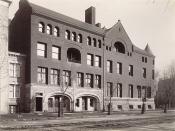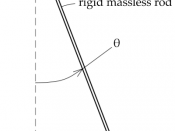A nonlinear problem for a plane
with a straight interfacial crack
�
Abstract
This paper considers the nonlinear plane problem of interfacial crack in a two-plane. On the crack edges normal pressure is applied; hence the direction of the normal and the boundary conditions depend on the deformation. The mechanical properties of nonlinear elastic material are described by the John's material model. Acceptance of the harmonic material model allows to use the theory of complex potentials and to obtain an exact solution of the problem on the entire domain. The results are important for nonlinear theory of elasticity
Introduction
The destruction of materials and structures usually occurs because of formation of cracks and their further development under by the external load. Therefore, investigation of fracture mechanics problems is actual for the all fields of engineering, construction and other industries.
The literature review has shown that the nonlinear elasticity problems, in contrast to linear problems, is still poorly investigated.
Only several dozen articles are devoted to theoretical analysis of nonlinear problems for domains with an interface crack. Such famous scientists as Knowels, Sternberg, Gao, Ru were engaged in fundamental research in this area
Nonlinear problem for a plane with an interface crack is considered in my work. The action of pressure on the edges of crack is of special interest from a practical and theoretical point of view. Acceptance of the harmonic John's material model allows to use the tensor apparatus. This allows to present the material of work in a compact form. The result is a graph of the crack displacements, obtained by both linear and nonlinear theory.
�
A nonlinear problem for a plane with a straight interfacial crack
Nonlinear problem of plane deformation of the two-plate with a straight interfacial crack is considered (figure 1). Ends of the...


